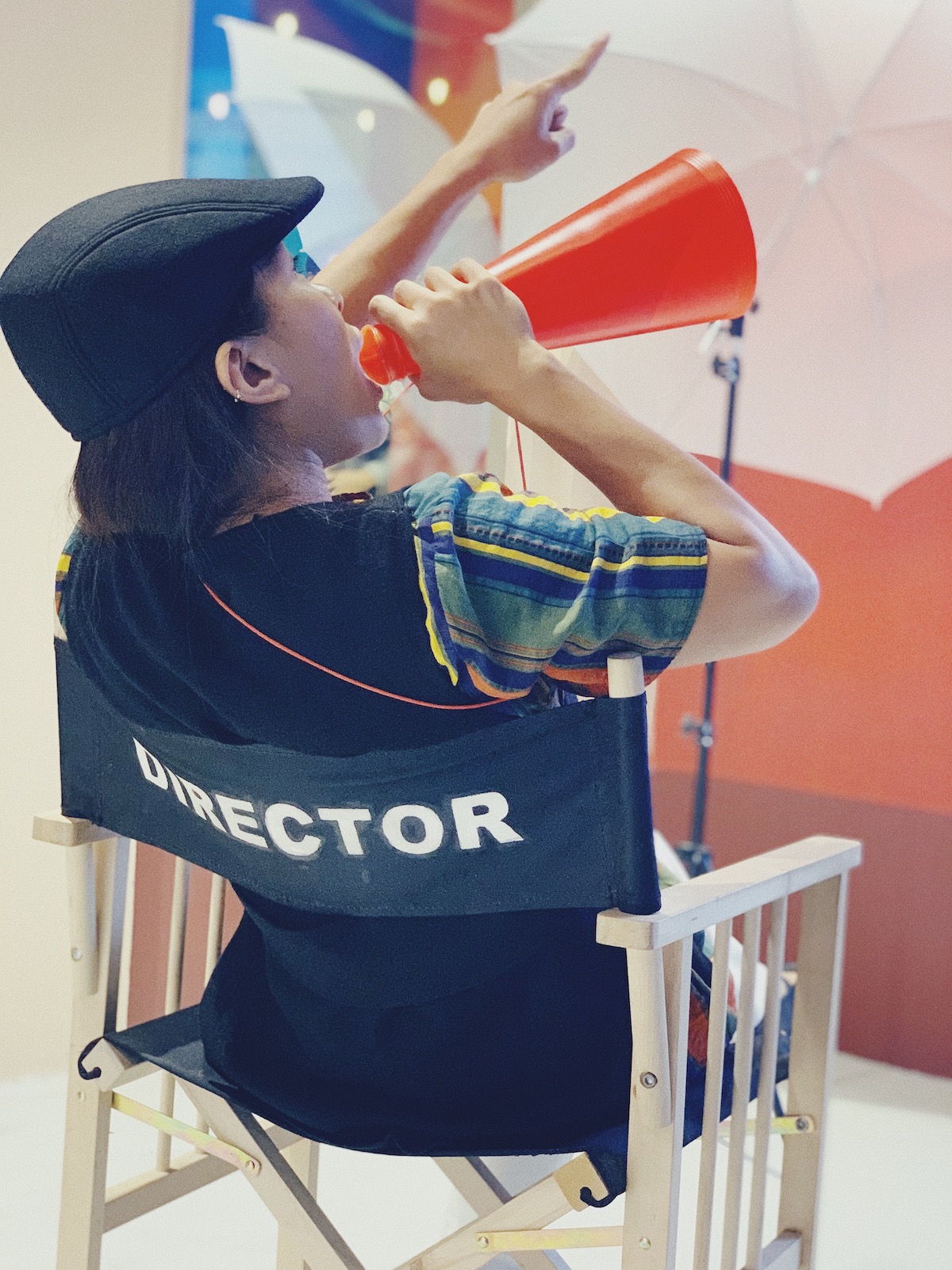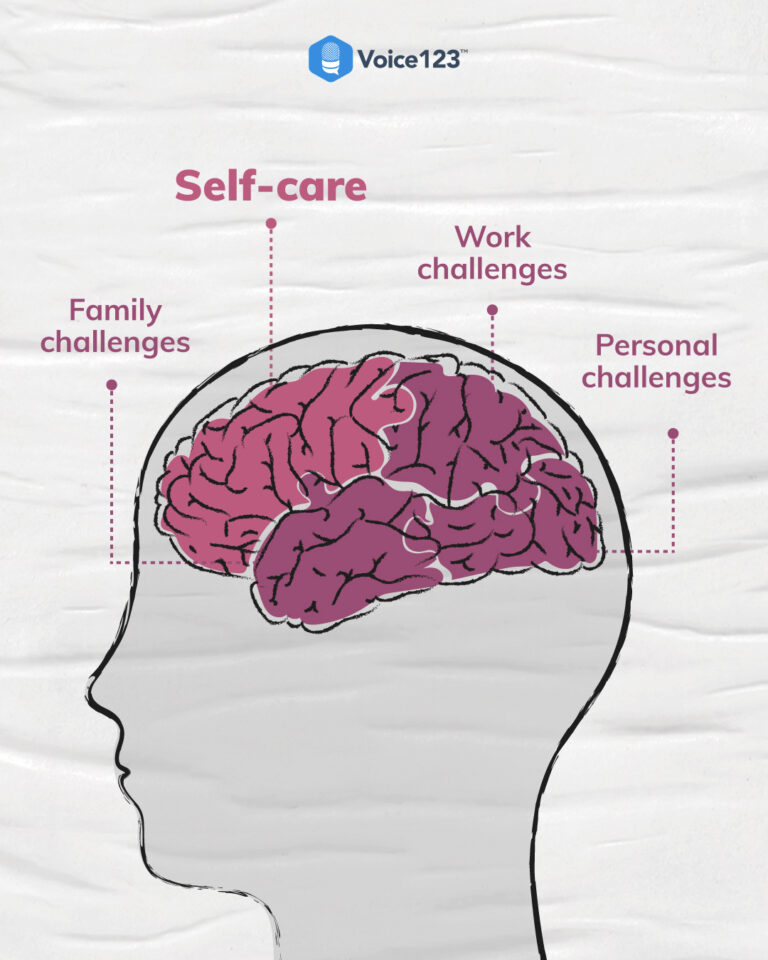How to get best results from a voice actor is a question Voice123‘s Customer Success team gets asked surprisingly often. So if you, as a client with a voice over project on hand are asking yourself exactly that, let’s see if we can answer it for you! But first, some context.
Let’s imagine…

Scene 7. Take 16. Action!
You’re thinking of a movie set, aren’t you?
And you’re probably imagining the director leaning forward in his chair in eager anticipation, and several actors ready to say their lines for the 16th time.
Wow. Can you imagine saying something for the 16th time with the emotion needed for the audience to believe it? And you can’t help but wonder, ‘why didn’t they get it right the first 15 times?’
It’s all about the transition from idea to action.
A director usually has a mental idea of what the project needs, but it’s tough to turn that into a clear plan for an actor to portray. And if the mental idea is blurry, the portrayal will follow suit. It’s kinda like playing charades blindfolded. One side has the answer and the other side is clueless.
And it’s a common issue that also sneaks into voice over projects. Voice actors, just like screen actors, need direction, feedback, and guidance. Without these vital ingredients, any acting project is simply a recipe for disaster.
What happens if there is no clear direction?
As a director/producer, you have a finite number of takes before a voice actor gets so confused they simply don’t know how to interpret the script anymore.
For example, you want it to sound friendly; like you’re talking to a close friend. But do you mean friendly like excited and eager as if you’re rambling on about your new dog, or friendly like you’re happily offering to watch the kids while your friends go to a baseball game?
Words have different meanings for different situations and different people. If the meaning is unclear the session will be a shot in the dark. This wastes the time and resources of everyone involved. And it can be especially frustrating when you have an urgent turnaround time.
In the end, a client is left without a voice-over and a voice actor walks away dejectedly. Not that it’s either side’s fault. That’s kinda like trying to blame the mountain for an avalanche – and why you need to know how to get best results from a voice actor from the word go.
The value of clear direction

Professional voice actors like those on Voice123 often deliver a brief in one take because they’re super talented. But they’re not mind-readers from a Marvel’s superhero blockbuster. They still need a clear character depiction before they can bring it to life.
Now, it’s easy to think that any direction is good enough. But that’s like asking someone for directions to the museum. Not that we need to since the invention of Siri, but for a moment, imagine if you received this reply:
“The museum? Well, I think if you go left, then make a right, no, sorry, I mean another left, then it’s next to the bank. Oh, wait! The bank closed down. It must be the library.”
You’d never find the museum!
But if the answer was simply: “Go straight until you get to the library, then make a left and you’ll see it right in front of you.”
You’d be there in no time!
That’s why a successful project depends not only on choosing the right voice actor but also on briefing that voice actor clearly and correctly. This involves translating the mental picture you have in your head into a verbal or written idea with clear, specific direction. It doesn’t have to be drawn-out, in fact, the shorter and simpler, the better!
Here are 6 tips to provide clear voice acting direction:
- Use a finished script: When a script is still undergoing changes, it can be hard for a voice actor to keep up. While revisions always creep in, try to organize the session with a complete script.
- Send the directions before the session: This will help the voice actor to set aside time to prepare and practice their voice acting, which saves valuable session time.
- Know the ins and outs of the character: If you don’t know the character, you won’t be able to explain it to the voice actor. Maybe you didn’t create the character or write the script, but you can follow up with those who did. Take time to ‘learn’ what’s needed for this voiceover.
- Find something similar: Giving the voice actor a video or similar project to relate to can help them to formulate an idea of the tone and pacing that their voice acting should follow. You can also listen to the voice actor’s samples and choose one that can be adapted for your project.
- Brush up on your voice acting terminology: Unsure what style, tone, or dry read means? Use an online resource to bring yourself up to speed. Then balance that with descriptive words such as; friendly, conversational, sympathetic, etc. This can help you to avoid vague, random descriptions that the voice actor won’t understand.
- Ask questions: Silence doesn’t always equal comprehension. If the voice over isn’t quite there, avoid asking the terminal question, ‘Do you understand?’ This coupled with harsh comments will back the voice actor into a corner. Rather ask: ‘Do you need another example? Which part should I re-phrase? Do you need an example read? What do you think of when I say friendly?’
Using the above tips, this is what your initial voice acting direction would look like in a real-life example:
“Here’s the final script. The character we’re looking for is similar to Sam Elliot in this commercial. The pace is 30 seconds, so don’t speak too slowly; use the full amount of time. The overall style should sound western and rugged, but balance that with a natural and confident tone. When I say natural, I mean it shouldn’t sound like you’re selling the product, more like you’re telling a friend about something great you just found. Ideally, we want the audience to trust the voice and relate to the product.”

Final thoughts
Telepathic powers are awesome to have, especially if you’re trying to take down an evil villain. But you don’t need that to get best results from a voice actor.
Simply steer their voice acting with a clear set of guidelines. Highlight who the character is, what it needs to sound like, give them an example, pick out a sample, and use descriptive words to explain the style and tone.
And don’t hesitate to adjust with simple and short directions like:
‘Dial back the eagerness a little.’
‘Project your voice a bit higher.’
‘That was good, but can you try it with more enunciation?’
It’s like that subtle, extra pinch of salt that brings it all together.
What are you waiting for? The director’s chair awaits because you now know how to get best results from a voice actor. We wish you the greatest success with your next project!






















































